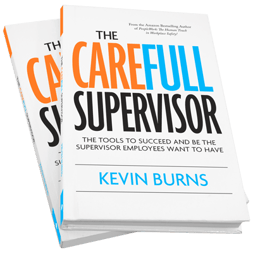Your job isn’t to enforce the rules as much as it is to build your team’s performance within the rules.
Top down. That’s how your safety program has probably always been handled. Everything rolls down from the front-office to the front-line.
It starts when government tells your company that you need to have a safety program, so they push it down onto your senior managers. The senior managers understand the legal requirement but don’t know the legislation nearly well enough, so they push it down to a safety manager. The safety manager builds a safety program and then pushes the responsibility for compliance down onto supervisors and safety officers. Those supervisors and safety people push the compliance processes and procedures down onto the front-line employees.
It’s like a one-way 8-lane highway of heavy trucks all heading in the same direction. And, you don’t dare try to push something up the other way. You will get crushed.
Shift starts here.
But, what if at both the safety and supervisory levels, there was a shift in how they viewed their roles? What if, instead of viewing safety as a top-down approach, they looked at how they can help facilitate buy-in to safety at the front-line?
It can be done. And it starts with this shift: Employees don’t work for you – you work for them.
Baseball, meet safety.
Let’s study what that really means. Let’s start with a comparison of a supervisor or safety person to a baseball manager. The baseball manager’s job isn’t to enforce baseball’s rules, or to field the ball, hit the ball or run the bases. The baseball manager’s job is to ensure that his players have the skills, direction, tools and motivation to successfully field the ball, hit the ball and run the bases.
The baseball manager knows that if he can get more of his players at bat more often, he can get more swings at the ball; which means more hits; which creates more runs; that creates more wins. More wins are what lead to winning a championship.
So, break it down to its simplest form, if you want to win, to be more successful, players need more times standing at bat. The key job of supervisory and front-line safety is to ensure that their team members are in a position to win more often.
Build within the rules.
Give your team the skills, tools and motivation to, not just barely comply, but win as a team. As a team or safety lead, your job isn’t to enforce the rules as much as it is to build your team’s performance within the rules.

Think about watching baseball practice. Players don’t take to the practice field to huddle at second base and review the rules of baseball. Practice is about preparing players to win a championship. Coaches build their players’ skill levels, give them the tools and motivation to want to excel – to give their best.
That’s the same job of front-line safety and supervisory. Not to just review the rules. But to improve the performance, skills and motivation to win a championship within those rules.
If the largest focus of your effort is spent explaining rules, you will not get buy-in from your team. But, help your team to work better, to develop new skills, to communicate better and to come together as a team, and you will find that their motivation to do the work improves. Safety improves when people are focused on what they are doing and how they are doing it.
Change your perspective from compliance to coaching. Employees don’t work for you. You work for them.
--
Learn more strategies to create a high-participation safety culture. Put Kevin Burns' expertise to work in your organization. Whether it's for a one-day safety event or training/facilitation session, or perhaps Kevin's 90-Day Safety Accelerator program and the High-Participation Safety Culture Shift program. There is a program that can work for you, your front-line crews, your management team, your safety committee and your supervisors.
Kevin Burns is a management consultant, speaker/facilitator and author of PeopleWork: The Human Touch in Workplace Safety. Kevin's M4 Method™ will guide you to engage your people better in safety. The best place to work is always the safest place to work.
Get details and more information http://www.kevburns.com/contact


